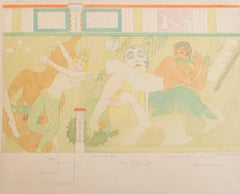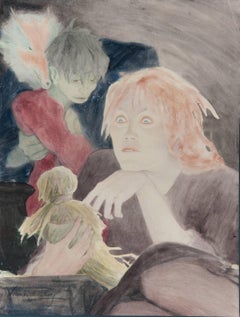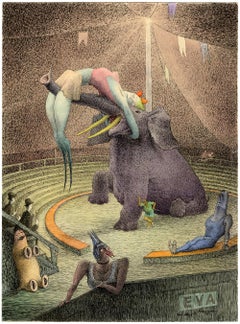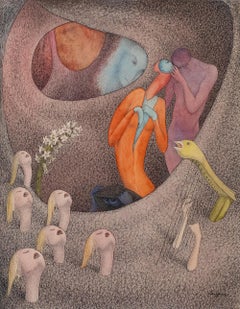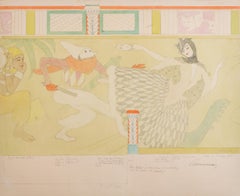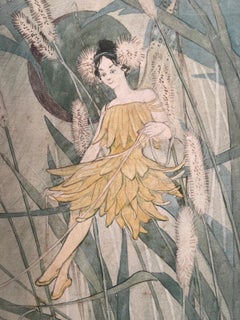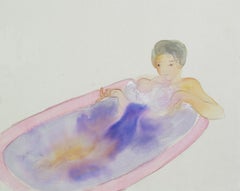Walter Schnackenberg Figurative Drawings and Watercolors
Walter Schnackenberg’s style changed several times during his long and successful career. Having studied in Munich, the artist traveled often to Paris where he fell under the spell of the Henri de Toulouse-Lautrec’s colorful and sensuous posters depicting theatrical and decadent subjects.
Schnackenberg became a regular contributor of similar compositions to the German magazines Jugend and Simplicissimus before devoting himself to the design of stage scenery and costumes. In the artist’s theatrical work, his mastery of form, ornamentation, and Orientalism became increasingly evident. He excelled at combining fluid Art Nouveau outlines, with spiky Expressionist passages, and the postures and patterns of the mysterious East.
In his later years, Schnackenberg explored the unconscious, using Surreal subject matter and paler colors that plainly portrayed dreams and visions, some imbued with political connotations. His drawings, illustrations, folio prints, and posters are highly sought today for their exceedingly imaginative qualities, enchanting subject matter, and arresting use of color.
Find Walter Schnackenberg art for sale on 1stDibs.
(Biography provided by Galerie Fledermaus)
1940s Art Nouveau Walter Schnackenberg Figurative Drawings and Watercolors
Ink, Watercolor, Pencil
1950s Expressionist Walter Schnackenberg Figurative Drawings and Watercolors
Paper, Watercolor
1940s Surrealist Walter Schnackenberg Figurative Drawings and Watercolors
Ink, Watercolor, Paper
1940s Surrealist Walter Schnackenberg Figurative Drawings and Watercolors
Ink, Watercolor, Paper
1940s Art Nouveau Walter Schnackenberg Figurative Drawings and Watercolors
Ink, Watercolor, Pencil
1920s Art Nouveau Walter Schnackenberg Figurative Drawings and Watercolors
Watercolor, Pencil
2010s Expressionist Walter Schnackenberg Figurative Drawings and Watercolors
Watercolor, Gouache, Handmade Paper
1940s Surrealist Walter Schnackenberg Figurative Drawings and Watercolors
India Ink, Watercolor
1950s Surrealist Walter Schnackenberg Figurative Drawings and Watercolors
Ink, Watercolor
Early 20th Century Expressionist Walter Schnackenberg Figurative Drawings and Watercolors
Paper, Watercolor, Etching
1910s Expressionist Walter Schnackenberg Figurative Drawings and Watercolors
Paper, Ink, Watercolor
1910s Art Nouveau Walter Schnackenberg Figurative Drawings and Watercolors
Chalk, Charcoal, Watercolor, Gouache, Pencil
Mid-20th Century Expressionist Walter Schnackenberg Figurative Drawings and Watercolors
Paper, Watercolor
1890s Art Nouveau Walter Schnackenberg Figurative Drawings and Watercolors
Paper, Ink, Watercolor
2010s Surrealist Walter Schnackenberg Figurative Drawings and Watercolors
Watercolor, Archival Paper
1960s Expressionist Walter Schnackenberg Figurative Drawings and Watercolors
Ink, Watercolor, Pen, Archival Paper
1910s Art Nouveau Walter Schnackenberg Figurative Drawings and Watercolors
Pencil, Ink, Watercolor
